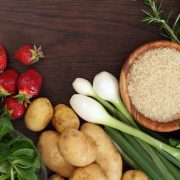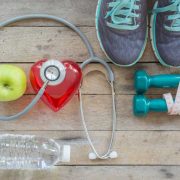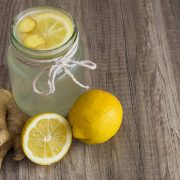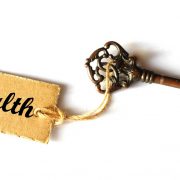DASH on over to a Better Diet
The FDA says that Americans consume an average of 3,400 mg of sodium every day. That is more than half the recommended amount by the American Heart Association. And, 90 percent of Americans are eating too much salt. So, that means we are in this mess together.
But why is salt so bad for our health? Isn’t that fact I’m avoiding sugar enough? The problem lies in our kidneys.
“When you consume excess sodium on a regular basis, the kidneys can’t keep up with the need to excrete it,” said experts at Consumer Reports “On Health” Magazine. “It gets stored in the blood, increasing water retention and blood volume.”
This means the heart has to work harder to do its job, and that increases pressure on your arteries. Over time, this leads to high blood pressure.
The American Heart Association says one in three Americans have high blood pressure, and one out of six of us don’t even know we have it. It’s time to make a DASH to a better diet.
The DASH diet, which stands for Dietary Approaches to Stop Hypertension, has been scientifically proven to reduce blood pressure. It emphasizes a diet filled with vegetables, fruits, low-fat dairy foods, and moderate amounts of whole grains, fish, poultry, and nuts. So, along with reducing sodium intake, here are five ways to incorporate DASH diet practices to improve heart health.
-
Choose Fresh over Packaged Foods
Although prepackaged sauces, rice mixes, and soups are convenient, they also typically contain high levels of sodium. “We are always mindful of hidden sodium in the meals we prepare for patients,” said Rob Mitchell, director of nursing at Pointe Meadows Health and Rehabilitation. “High doses of sodium contribute to high blood pressure and other risk factors for heart disease. Fortunately, our dietary and nutrition staff designs meals that are delicious and nutritious.”
When possible, the National Kidney Foundation recommends selecting fresh fruits and vegetables rather than canned. Also, fresh cuts of beef, chicken, or pork contain sodium, but it pales compared to popular processed meats like bacon or ham. “If a food item keeps well in the fridge for days or weeks, that’s a tip-off that the sodium content is too high,” they said.
-
Experiment with Spices
The National Heart, Blood, and Lung Institute has a huge list of alternatives for seasoning your favorite foods. Instead of reaching for the salt shaker, try garlic, vinegar, citrus, or dried herbs to add zest and flavor.
-
Read Labels
Two things to remember when reading labels are the serving size and the percent daily value. For example, a can of soda that you would never dream of sharing with anyone may actually be designed to hold two servings. Then, read the percent daily value. That number is based on the daily value for sodium. As a guideline, a 5 percent DV of sodium per serving is low. Compare that to a 20 percent DV, which is high.
-
Drink Water
We should be drinking water anyway, but for those occasions when you’ve eaten an extra salty meal, flushing your system with water is helpful as a short-term remedy, but it isn’t a long-term solution. “The increased blood volume that results from your body holding onto the excess water is what raises your blood pressure,” said dietitian Monica Reinagel.
-
Exercise
Studies show that sweating can help control excess sodium. However, that doesn’t mean you can eat more sodium. “If you are a manual laborer working an 8-hour to 12-hour shift, you lose a lot of sodium-5,000 to 6,000 mg per day. So you can safely have more than the recommended amount of sodium in your diet,” said Anthony l. Komaroff, MD., from Harvard Health. “On the other hand, if you work out at the gym for 30 minutes a day and are otherwise sedentary, there is a reasonable chance that you still may be taking in too much salt in your diet.”
If you are ready to get on the right track to better health, make a DASH over to a diet with less sodium, more potassium, more energy, and healthier living.











